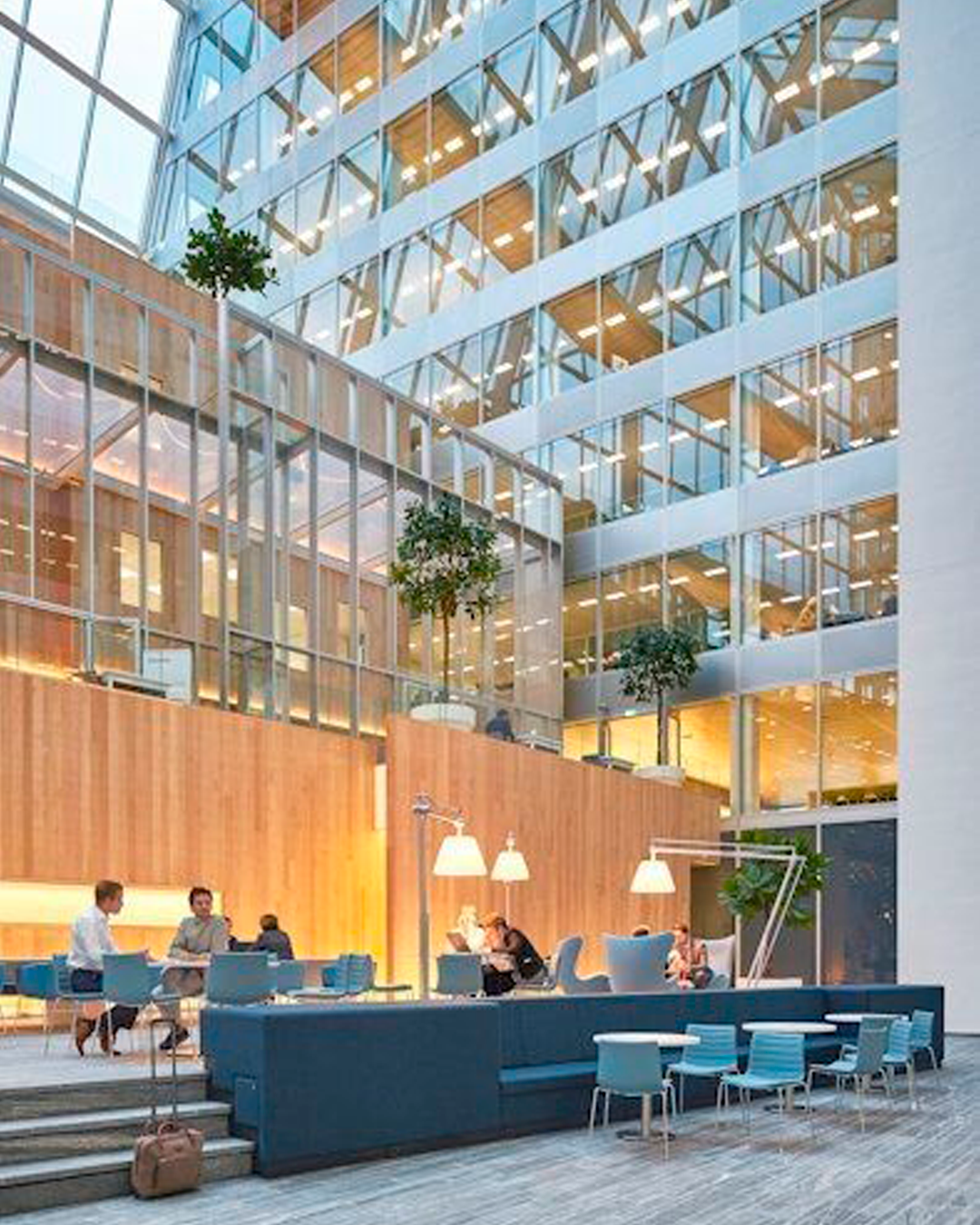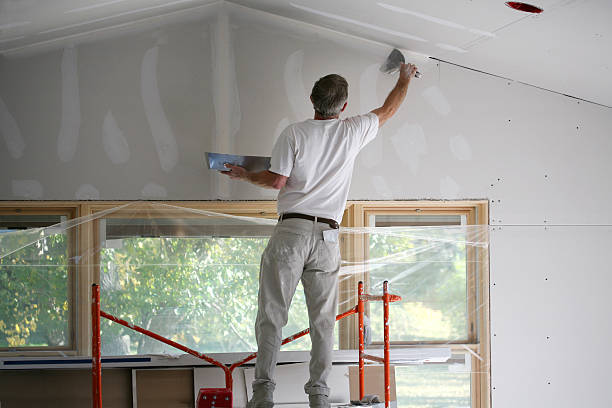Adapting the Construction Industry for a Sustainable Future
Table of Contents:
- Introduction
- Current Challenges in the Construction Industry
- Importance of Adaptation for a Sustainable Future
- Two Ways the Construction Industry can Adapt
- Benefits of Adaptation for the Construction Industry
- Case Studies: Successful Adaptation in the Construction Industry
- Overcoming Barriers to Adaptation
- Collaboration and Partnerships for Industry-wide Adaptation
- Conclusion
Introduction
The construction industry plays a pivotal role in shaping the built environment and driving economic growth. However, it is also one of the sectors that heavily impacts the environment, contributing to significant resource depletion, waste generation, and carbon emissions. To ensure a sustainable future, the construction industry must adapt and embrace practices that minimize its environmental footprint.
This blog post aims to explore two key ways the construction industry can adapt to preserve its future. By embracing green building practices and adopting advanced construction technologies, the industry can mitigate its environmental impact while improving efficiency and profitability. These approaches offer promising solutions to address the current challenges and pave the way for a more sustainable and resilient construction sector.
The following sections will delve deeper into the current challenges faced by the industry, highlight the importance of adaptation, and provide insights into the two key strategies for sustainable transformation. Real-world case studies, benefits of adaptation, overcoming barriers, and the significance of collaboration will also be discussed. By the end of this blog post, readers will have a comprehensive understanding of the pathways available to the construction industry in building a sustainable future.
Current Challenges in the Construction Industry
The construction industry faces several challenges that hinder its path towards sustainability. Understanding these challenges is crucial for identifying the areas that require adaptation. Here are some of the prominent challenges:
2.1 Environmental Impact The construction industry is responsible for a significant portion of global energy consumption, greenhouse gas emissions, and waste generation. The extraction of raw materials, transportation, and construction processes contribute to carbon emissions and resource depletion. Additionally, improper waste management and disposal practices further exacerbate the industry’s environmental impact.
2.2 Energy Inefficiency Traditional construction practices often result in energy-inefficient buildings. Inadequate insulation, outdated HVAC systems, and inefficient lighting contribute to excessive energy consumption and higher carbon emissions. These inefficiencies not only harm the environment but also increase operational costs for building owners.
2.3 Limited Use of Sustainable Materials The construction industry heavily relies on non-renewable resources, such as concrete, steel, and plastics, which have significant environmental footprints. The limited adoption of sustainable materials, such as recycled or bio-based alternatives, poses a challenge to reducing the industry’s ecological impact.
2.4 Lack of Innovation and Technology Adoption The construction industry has been slow in embracing innovation and technology compared to other sectors. Outdated construction practices, lack of digitalization, and resistance to change hinder the adoption of more sustainable and efficient construction methods. This reluctance to adopt advanced technologies prevents the industry from achieving substantial progress towards sustainability.
2.5 Fragmented Supply Chains The construction industry involves numerous stakeholders, including architects, engineers, contractors, and suppliers, often operating independently. This fragmentation can lead to coordination challenges, miscommunication, and inefficiencies in the supply chain. Lack of collaboration and information sharing hinder the implementation of sustainable practices across the entire project lifecycle.
2.6 Regulatory and Financial Barriers The absence of stringent regulations and incentives related to sustainability in some regions can impede the industry’s transition towards more sustainable practices. Additionally, high upfront costs associated with sustainable materials and technologies often deter construction companies from investing in these alternatives.
Addressing these challenges requires a proactive approach and a collective effort from all stakeholders involved in the construction industry. Through adaptation and the implementation of sustainable practices, these challenges can be mitigated, leading to a more environmentally responsible and resilient construction sector.
Importance of Adaptation for a Sustainable Future
Adapting the construction industry is of paramount importance for achieving a sustainable future. Here are several reasons why adaptation is crucial:
3.1 Environmental Conservation The construction industry has a significant impact on the environment, including resource consumption, waste generation, and carbon emissions. By adapting to more sustainable practices, the industry can reduce its ecological footprint and contribute to environmental conservation. This includes adopting energy-efficient designs, utilizing sustainable materials, and implementing construction methods that minimize waste and emissions.
3.2 Climate Change Mitigation The construction industry is a major contributor to greenhouse gas emissions, which drive climate change. Adapting to sustainable practices can help mitigate these emissions by reducing energy consumption, utilizing renewable energy sources, and implementing carbon-neutral construction processes. By minimizing its carbon footprint, the industry can play a vital role in addressing climate change and transitioning to a low-carbon economy.
3.3 Resource Efficiency and Conservation The construction industry is known for its resource-intensive practices, such as raw material extraction and high energy consumption. By adapting to sustainable approaches, the industry can promote resource efficiency and conservation. This involves optimizing material use, implementing circular economy principles, and exploring alternative construction techniques that minimize resource depletion. By doing so, the industry can reduce waste, preserve valuable resources, and contribute to a more sustainable use of materials.
3.4 Economic Opportunities Adaptation to sustainable practices in the construction industry presents significant economic opportunities. Embracing green building practices and advanced technologies can lead to cost savings through reduced energy consumption, lower operational expenses, and improved efficiency. Additionally, the growing demand for sustainable buildings and infrastructure creates new market opportunities and allows construction companies to differentiate themselves in a competitive industry.
3.5 Enhanced Reputation and Stakeholder Engagement Adopting sustainable practices can enhance the reputation of construction companies and foster positive stakeholder engagement. In an increasingly environmentally conscious society, stakeholders, including clients, investors, and communities, value sustainability commitments. By showcasing a dedication to sustainable construction, companies can attract more clients, investors, and partnerships, leading to long-term growth and success.
3.6 Future-proofing the Industry Adapting to sustainable practices is essential for future-proofing the construction industry. As sustainability becomes a global priority, regulations and market expectations will increasingly focus on environmentally responsible construction. Companies that proactively adapt to these changes will be better positioned to meet evolving requirements, remain competitive, and thrive in a rapidly changing business landscape.
By recognizing the importance of adaptation and actively implementing sustainable practices, the construction industry can pave the way for a more environmentally conscious, resilient, and prosperous future.
Two Ways the Construction Industry can Adapt
To preserve its future and promote sustainability, the construction industry can embrace two key strategies: embracing green building practices and adopting advanced construction technologies. These approaches address various environmental challenges while improving efficiency and reducing the industry’s ecological footprint.
4.1 Embracing Green Building Practices
Green building practices focus on minimizing the environmental impact of construction projects throughout their entire lifecycle. Here are some key aspects of green building practices:
4.1.1 Energy Efficiency Integrating energy-efficient designs and technologies in buildings can significantly reduce energy consumption and carbon emissions. This includes incorporating insulation, energy-efficient lighting systems, smart HVAC controls, and renewable energy sources such as solar panels or geothermal systems. By optimizing energy usage, the construction industry can contribute to a more sustainable energy future.
4.1.2 Sustainable Material Choices Selecting sustainable and environmentally friendly materials is crucial for reducing the industry’s ecological footprint. This includes using recycled or renewable materials, such as reclaimed wood or recycled concrete aggregates. Additionally, embracing sustainable sourcing practices and minimizing waste generation during construction can further enhance the industry’s sustainability.
4.1.3 Water Conservation Implementing water-efficient strategies, such as low-flow fixtures, rainwater harvesting systems, and greywater recycling, can help conserve water resources. By reducing water consumption in buildings and construction processes, the industry can contribute to water conservation and address water scarcity challenges.
4.1.4 Green Infrastructure and Landscaping Integrating green infrastructure, such as green roofs, permeable pavements, and urban landscaping, can mitigate the environmental impact of construction projects. Green spaces help absorb rainwater, reduce heat island effect, enhance biodiversity, and improve air quality. Incorporating these elements into construction projects can create more sustainable and resilient urban environments.
4.2 Adopting Advanced Construction Technologies
The construction industry can also adapt by embracing advanced construction technologies. These technologies streamline processes, enhance efficiency, and reduce environmental impact. Here are some notable examples:
4.2.1 Building Information Modeling (BIM) BIM is a digital technology that enables collaborative and efficient planning, design, construction, and operation of buildings. By creating a virtual model that integrates architectural, structural, and MEP (mechanical, electrical, plumbing) systems, BIM improves coordination, reduces errors, optimizes material usage, and facilitates sustainable design decision-making.
4.2.2 Prefabrication and Modular Construction Prefabrication involves manufacturing building components off-site and assembling them on-site, reducing construction waste and enhancing efficiency. Modular construction takes prefabrication a step further by creating entire modules off-site that can be assembled into complete buildings. These approaches minimize material waste, decrease construction time, and improve quality control.
4.2.3 Robotics and Automation The integration of robotics and automation in construction processes can enhance productivity, safety, and sustainability. Robots can perform repetitive tasks with precision, reducing human error and improving efficiency. Automation technologies, such as autonomous vehicles and drones, streamline logistics, reduce transportation-related emissions, and enhance construction site safety.
4.2.4 3D Printing 3D printing technology enables the construction of complex structures using layer-by-layer deposition of construction materials. This approach reduces material waste, shortens construction time, and offers design flexibility. 3D printing also allows for the use of sustainable materials, such as recycled concrete or bio-based composites, further promoting sustainability in construction.
By embracing green building practices and adopting advanced construction technologies, the industry can adapt to a more sustainable and resilient future. These approaches not only reduce environmental impact but also enhance efficiency, improve project outcomes, and position construction companies as leaders in sustainable development.
Benefits of Adaptation for the Construction Industry

Adapting to sustainable practices in the construction industry offers numerous benefits, encompassing environmental, economic, and reputational aspects. Here are some key advantages of adaptation:
5.1 Environmental Benefits
5.1.1 Reduced Carbon Footprint: By embracing green building practices and adopting advanced technologies, the construction industry can significantly reduce its carbon emissions. This contributes to global efforts to mitigate climate change and achieve sustainability targets.
5.1.2 Conservation of Resources: Adapting to sustainable practices promotes efficient resource utilization, reducing waste generation and preserving valuable resources. This includes optimizing material use, incorporating recycled or renewable materials, and implementing circular economy principles.
5.1.3 Improved Environmental Quality: Sustainable practices enhance the environmental quality of built spaces. By integrating energy-efficient designs, green infrastructure, and sustainable materials, the industry can improve indoor air quality, reduce water consumption, and minimize the impact on ecosystems.
5.2 Economic Benefits
5.2.1 Cost Savings: Sustainable practices often lead to reduced operational costs through improved energy efficiency and resource management. Energy-efficient buildings, for example, require less energy for heating, cooling, and lighting, resulting in lower utility bills and long-term cost savings.
5.2.2 Market Differentiation: Embracing sustainability can set construction companies apart in a competitive market. With the growing demand for sustainable buildings, companies that demonstrate their commitment to environmental responsibility can attract more clients, gain a competitive edge, and access new market opportunities.
5.2.3 Enhanced Long-Term Value: Sustainable buildings and infrastructure tend to hold higher long-term value. The improved energy efficiency, lower operating costs, and positive environmental impact make sustainable properties attractive to investors and buyers, translating into increased asset value and potential return on investment.
5.3 Reputational and Social Benefits
5.3.1 Enhanced Reputation: By adapting to sustainable practices, construction companies can enhance their reputation and brand image. Sustainability is increasingly valued by stakeholders, including clients, investors, and the community. Demonstrating a commitment to environmental responsibility can foster trust, attract more business, and enhance relationships with stakeholders.
5.3.2 Positive Stakeholder Engagement: Embracing sustainability in construction projects can foster positive engagement with stakeholders. Clients, communities, and employees are more likely to support and engage with companies that prioritize environmental responsibility and contribute to sustainable development.
5.3.3 Compliance with Regulations and Standards: Adapting to sustainable practices ensures compliance with evolving regulations and industry standards related to environmental sustainability. Staying ahead of regulatory requirements positions construction companies to navigate potential legal and compliance challenges effectively.
By embracing adaptation and implementing sustainable practices, the construction industry can experience a wide range of benefits. These include environmental conservation, cost savings, market differentiation, enhanced reputation, and positive stakeholder engagement. Ultimately, the industry’s proactive commitment to sustainability can contribute to a more resilient, prosperous, and environmentally responsible future.
Case Studies: Successful Adaptation in the Construction Industry
Examining real-world examples of successful adaptation in the construction industry provides valuable insights into the practical implementation of sustainable practices. Here are two case studies that highlight notable achievements:
6.1 The Edge – Amsterdam, Netherlands
The Edge, located in Amsterdam, is widely regarded as one of the world’s most sustainable office buildings. It showcases innovative design, advanced technologies, and sustainable features. Key adaptations include:
6.1.1 Energy Efficiency: The Edge incorporates energy-efficient strategies such as smart LED lighting, presence detection sensors, and daylight harvesting systems. These technologies optimize energy use, reducing energy consumption by up to 70% compared to conventional office buildings.
6.1.2 Integrated Building Systems: The building utilizes a comprehensive Building Management System (BMS) that integrates various systems, including lighting, heating, cooling, and ventilation. This centralized control system enables efficient monitoring and optimization of building performance.

6.1.3 Renewable Energy Generation: The Edge incorporates solar panels on the roof and south-facing facades, generating renewable energy to power the building. The excess energy is stored in batteries and used during peak periods, further reducing reliance on the grid.
6.1.4 Sustainable Materials and Design: The building incorporates sustainable materials, such as FSC-certified wood and recycled materials. It also features a double-skin glass façade that enhances insulation and maximizes natural daylight while minimizing heat gain.
6.2 The Crystal – London, United Kingdom
The Crystal in London is a sustainable urban development center and exhibition space designed to showcase sustainable technologies and practices. Notable adaptations include:
6.2.1 Energy Efficiency and Renewable Energy: The Crystal features advanced energy management systems, including intelligent lighting, heating, and cooling controls. It also incorporates photovoltaic panels and a ground-source heat pump to generate renewable energy, reducing its reliance on grid electricity.
6.2.2 Water Management: The building utilizes rainwater harvesting systems to collect and store rainwater for non-potable uses such as irrigation and toilet flushing. Additionally, water-efficient fixtures and fittings are implemented to minimize water consumption.
6.2.3 Sustainable Transport Solutions: The Crystal promotes sustainable transportation by providing electric vehicle charging stations and encouraging cycling with dedicated cycle parking facilities. The building is well-connected to public transportation, reducing reliance on private vehicles.
6.2.4 Interactive Exhibition Spaces: The Crystal offers interactive exhibits and displays that educate visitors about sustainable technologies and practices. It serves as an educational platform, raising awareness about sustainability and inspiring positive change.
These case studies demonstrate how the construction industry can successfully adapt to sustainable practices. By incorporating energy-efficient technologies, renewable energy generation, sustainable materials, and innovative design, these projects have achieved remarkable environmental performance while showcasing economic viability and enhancing their reputations. These examples serve as inspiration and benchmarks for the construction industry’s ongoing efforts to embrace sustainability.
Overcoming Barriers to Adaptation
While the benefits of adapting to sustainable practices in the construction industry are clear, several barriers can hinder the process. Overcoming these barriers is crucial for successful adaptation. Here are some common challenges and strategies for overcoming them:
7.1 Financial Barriers
7.1.1 High Initial Costs: One of the main barriers to adaptation is the perceived high initial costs associated with sustainable practices. However, it is essential to consider the long-term cost savings and benefits of sustainability. Strategies for overcoming financial barriers include exploring financing options, incentives, and grants for sustainable projects, and conducting life cycle cost analyses that demonstrate the financial viability of sustainable investments.
7.1.2 Lack of Financial Expertise: Construction companies may lack the financial expertise to navigate the complexities of sustainable investments. Partnering with financial experts, engaging in training programs, or seeking guidance from sustainable development organizations can help overcome this barrier.
7.2 Lack of Awareness and Education
7.2.1 Knowledge and Awareness Gaps: Many construction professionals may lack awareness or knowledge about sustainable practices and their benefits. Bridging these knowledge gaps through training programs, workshops, and educational initiatives can help promote understanding and support for adaptation.
7.2.2 Collaboration and Information Sharing: Encouraging collaboration among industry stakeholders, including architects, engineers, contractors, and suppliers, can facilitate knowledge sharing and promote best practices. Industry associations, conferences, and online platforms can serve as valuable forums for exchanging information and fostering learning.
7.3 Regulatory and Policy Barriers
7.3.1 Inadequate Regulations: Insufficient or outdated regulations may hinder the adoption of sustainable practices. Advocating for stronger regulations, engaging with policymakers, and participating in the development of sustainability standards can help overcome this barrier.
7.3.2 Lack of Incentives: The absence of financial or non-financial incentives for sustainable construction can discourage companies from adapting. Engaging with government entities and industry associations to advocate for incentives, such as tax credits, grants, or expedited permitting processes, can help address this barrier.
7.4 Resistance to Change
7.4.1 Cultural and Attitudinal Barriers: Resistance to change and a reluctance to adopt new technologies and practices can hinder adaptation efforts. Creating a culture of sustainability within construction companies, fostering leadership buy-in, and highlighting the benefits of adaptation can help overcome resistance and drive positive change.
7.4.2 Demonstrating Success Stories: Showcasing successful case studies and real-world examples of the benefits of adaptation can inspire and motivate industry professionals to embrace sustainable practices. Highlighting the financial, environmental, and reputational advantages can help overcome skepticism and encourage wider adoption.
7.5 Supply Chain and Collaboration Challenges
7.5.1 Fragmented Supply Chains: Fragmentation within the construction industry can hinder collaboration and impede the implementation of sustainable practices. Encouraging collaboration, fostering partnerships, and integrating sustainable practices into procurement processes can promote a more integrated and sustainable supply chain.
7.5.2 Information Sharing and Collaboration Platforms: Establishing platforms for sharing best practices, lessons learned, and industry research can facilitate collaboration and knowledge exchange among stakeholders. These platforms can encourage the adoption of sustainable practices throughout the construction industry.
By addressing these barriers through proactive measures, collaboration, education, policy advocacy, and financial support, the construction industry can overcome obstacles and successfully adapt to sustainable practices. By doing so, the industry can pave the way for a more sustainable and resilient future.
Collaboration and Partnerships for Industry-wide Adaptation
Collaboration and partnerships play a crucial role in driving industry-wide adaptation to sustainable practices in the construction industry. By working together, stakeholders can share knowledge, resources, and expertise to overcome common challenges and accelerate the adoption of sustainable strategies. Here are key collaboration and partnership approaches for industry-wide adaptation:
8.1 Industry Associations and Networks
Industry associations and networks provide a platform for construction professionals to come together, exchange ideas, share best practices, and collaborate on sustainability initiatives. These organizations can facilitate industry-wide adaptation by:
8.1.1 Promoting Knowledge Sharing: Associations and networks can organize workshops, conferences, and webinars to disseminate information and promote knowledge sharing on sustainable construction practices. They can also provide online platforms for members to connect and collaborate.
8.1.2 Developing Standards and Guidelines: Industry associations can develop sustainability standards, guidelines, and certifications that establish benchmarks for sustainable construction practices. These frameworks provide a common reference point and help drive consistent adoption of sustainable strategies across the industry.
8.1.3 Advocating for Policy and Regulatory Changes: Associations can engage with policymakers and advocate for policies and regulations that support sustainability in the construction industry. By working together, associations can amplify their voices and influence policy decisions that facilitate adaptation.
8.2 Public-Private Partnerships
Public-private partnerships (PPPs) bring together government entities, construction companies, and other stakeholders to collaborate on sustainable infrastructure projects. PPPs can:
8.2.1 Pool Resources: PPPs allow for the pooling of financial resources, technical expertise, and knowledge from both public and private sectors. This collaboration enables the implementation of large-scale sustainable projects that may not be feasible for individual entities.
8.2.2 Foster Innovation: By combining the strengths and perspectives of different stakeholders, PPPs encourage innovation in sustainable construction practices. They provide an opportunity to explore and implement cutting-edge technologies and approaches.
8.2.3 Share Risks and Rewards: PPPs distribute risks and rewards among partners, ensuring that incentives are aligned for successful project implementation. This collaborative approach promotes accountability and shared responsibility for sustainable outcomes.
8.3 Research Institutions and Academia
Research institutions and academia play a vital role in advancing sustainable practices in the construction industry. Collaboration with these entities can:
8.3.1 Conduct Research and Development: Research institutions can collaborate with construction companies to conduct research on sustainable materials, technologies, and construction techniques. This collaboration facilitates the development of innovative solutions that address industry challenges.
8.3.2 Provide Training and Education: Academia can offer specialized training programs and courses on sustainable construction practices. By equipping construction professionals with the necessary knowledge and skills, academia supports industry-wide adaptation to sustainable strategies.
8.3.3 Support Pilot Projects and Demonstrations: Research institutions can collaborate with construction companies on pilot projects and demonstrations of sustainable practices. These projects serve as tangible examples that showcase the feasibility and benefits of adaptation.
8.4 Supply Chain Collaboration
Collaboration within the construction supply chain is essential for driving industry-wide adaptation. Suppliers, contractors, and subcontractors can work together to:
8.4.1 Promote Sustainable Materials and Technologies: Suppliers play a vital role in providing sustainable materials, equipment, and technologies to the construction industry. Collaborating with suppliers to source environmentally friendly products and promote sustainable alternatives can drive industry-wide adaptation.
8.4.2 Share Best Practices: Contractors and subcontractors can collaborate to share best practices and lessons learned from sustainable projects. This collaboration fosters knowledge exchange and encourages the adoption of sustainable practices throughout the supply chain.
8.4.3 Set Sustainability Targets: Collaborative efforts within the supply chain can establish common sustainability targets and performance indicators. This ensures that sustainability is prioritized at every stage of the construction process, from material sourcing to project
Conclusion
The construction industry is facing the imperative to adapt and embrace sustainable practices to preserve its future. By overcoming barriers and embracing adaptation, the industry can unlock numerous benefits. These include environmental conservation, cost savings, market differentiation, enhanced reputation, and positive stakeholder engagement.
Successful case studies, such as The Edge in Amsterdam and The Crystal in London, demonstrate the feasibility and impact of sustainable adaptation in the construction industry. These examples showcase innovative designs, energy-efficient technologies, renewable energy generation, and sustainable materials, setting benchmarks for others to follow.
To drive industry-wide adaptation, collaboration and partnerships are crucial. Industry associations and networks provide platforms for knowledge sharing and the development of standards. Public-private partnerships enable the pooling of resources and foster innovation. Collaboration with research institutions and academia promotes research, education, and the development of sustainable solutions. Supply chain collaboration ensures the adoption of sustainable materials and practices throughout the construction process.
Overcoming barriers to adaptation, such as financial constraints, lack of awareness, regulatory challenges, resistance to change, and supply chain fragmentation, requires proactive measures and collective effort. By addressing these barriers and fostering collaboration, the construction industry can pave the way for a more sustainable, resilient, and environmentally responsible future.
Adaptation is not only a necessity but also an opportunity for the construction industry. By embracing sustainability, the industry can contribute to global efforts in mitigating climate change, reducing resource consumption, and building a more sustainable society. It is through the collective action and commitment of all stakeholders that the construction industry can preserve its future and make a positive impact on the world.






